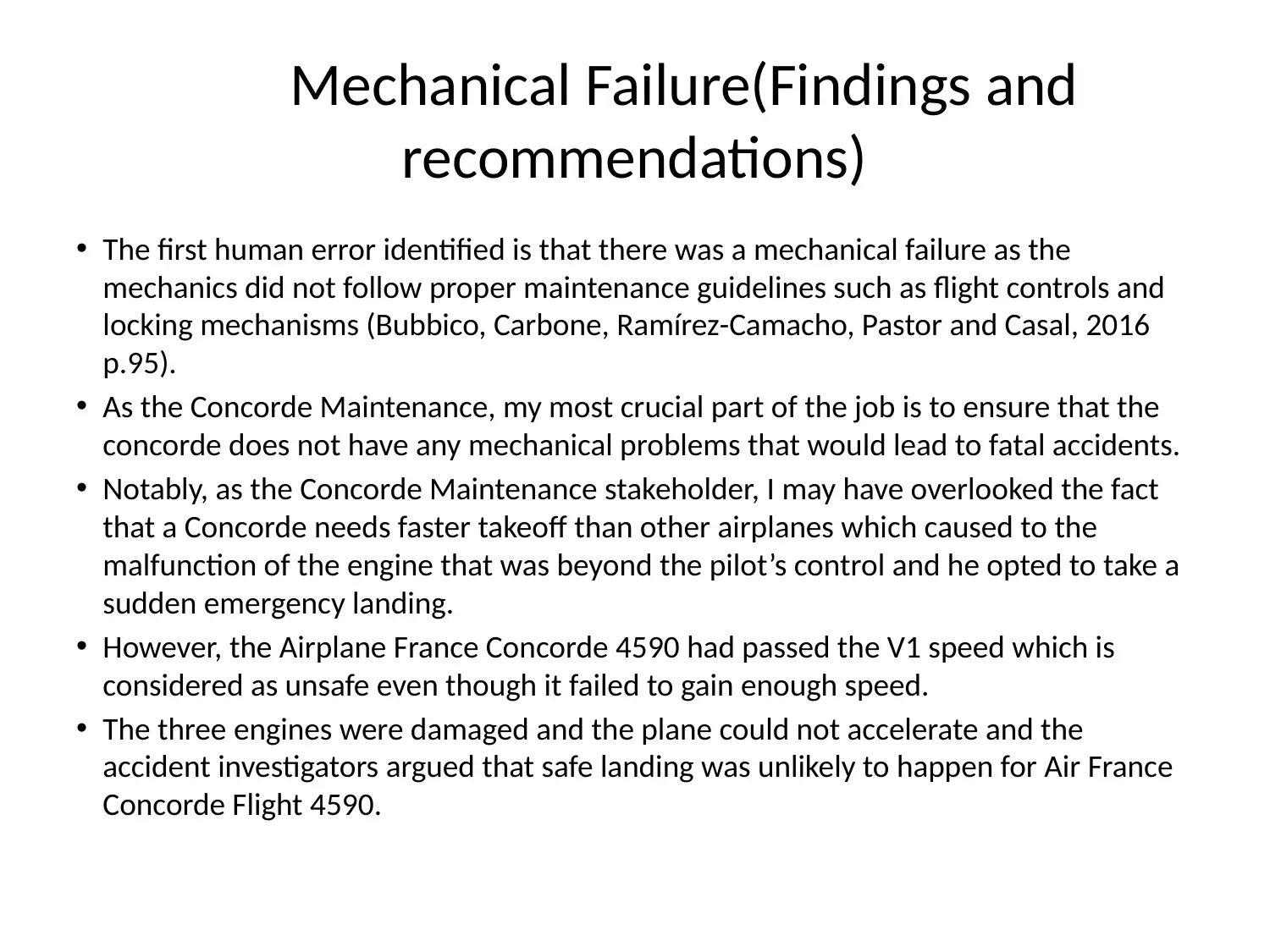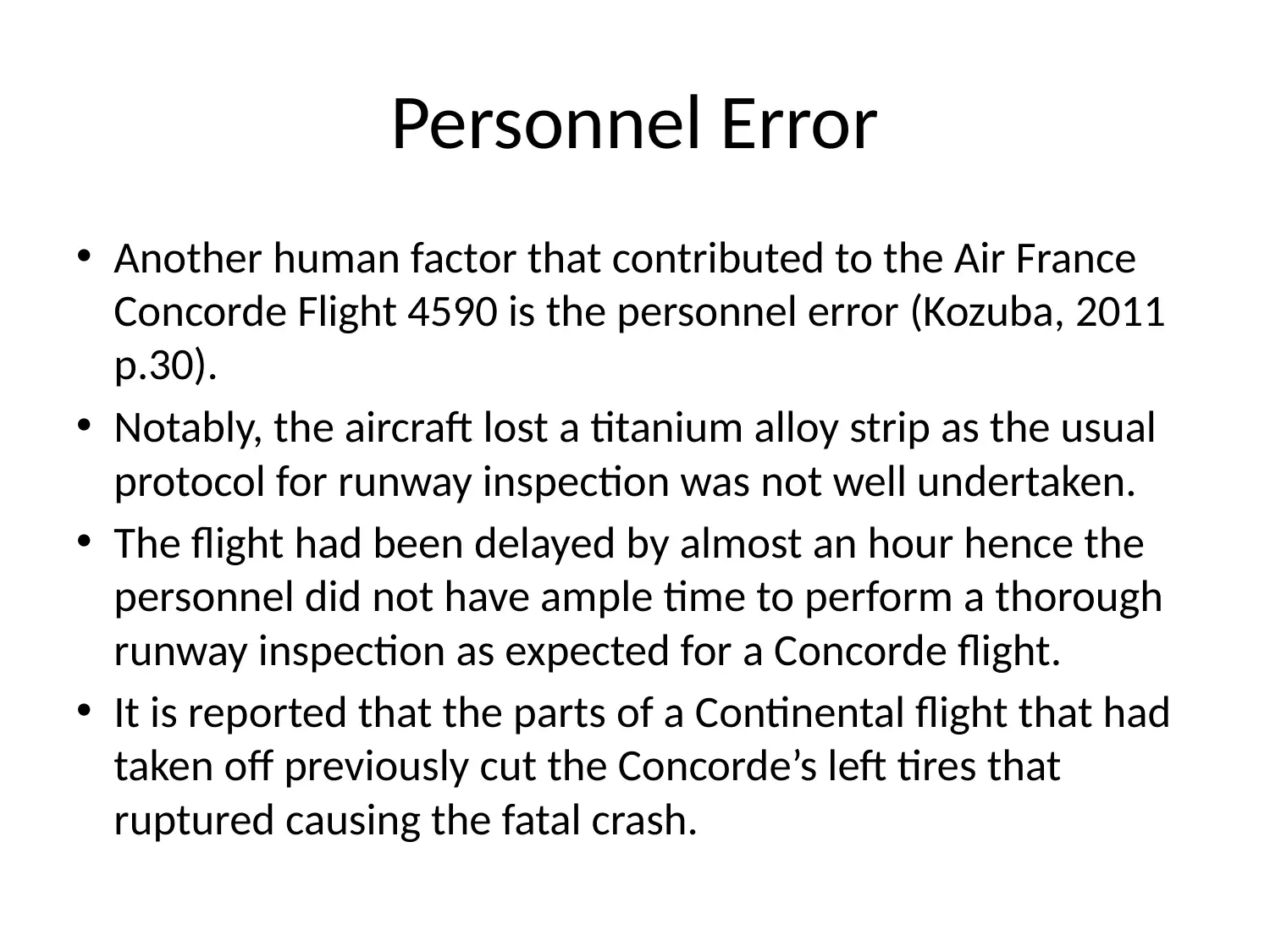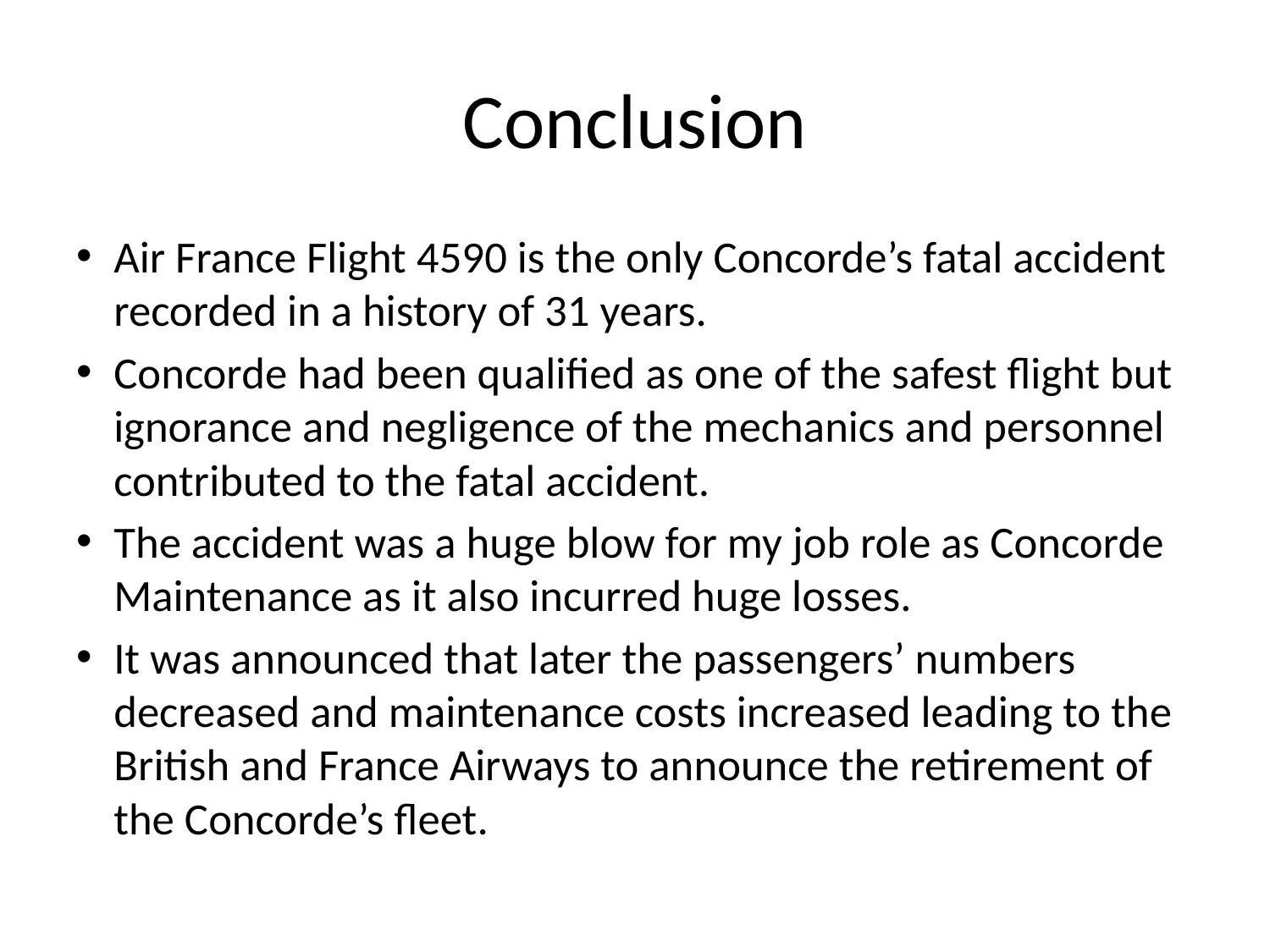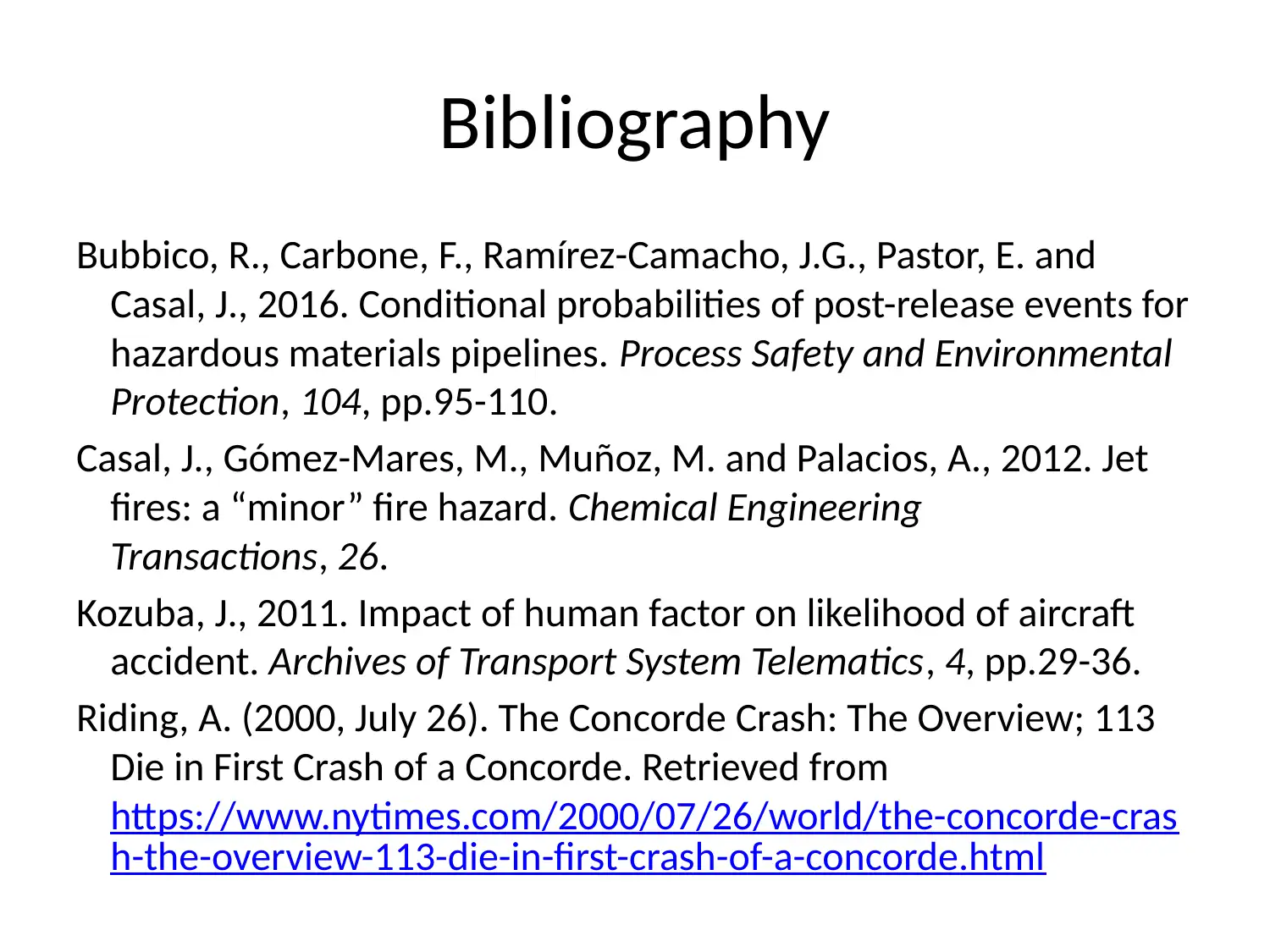Concorde Flight 4590: A Healthcare Accident Investigation Report
VerifiedAdded on 2023/01/11
|6
|706
|40
Report
AI Summary
This report provides an analysis of the Air France Concorde Flight 4590 accident, focusing on the perspective of a Concorde Maintenance stakeholder. It details the mechanical failures, such as improper maintenance guidelines and engine malfunctions, and personnel errors, including inadequate runway inspections. The report highlights the crucial role of maintenance in preventing such disasters and the significant impact the accident had on the Concorde fleet's future. The investigation examines the titanium alloy strip issue and the delayed flight's impact. The conclusion underscores the significance of the accident as the only fatal crash in Concorde's history, attributing it to negligence and ignorance, and leading to the retirement of the fleet. The report references key sources and emphasizes the importance of adherence to safety protocols.
1 out of 6










![[object Object]](/_next/static/media/star-bottom.7253800d.svg)